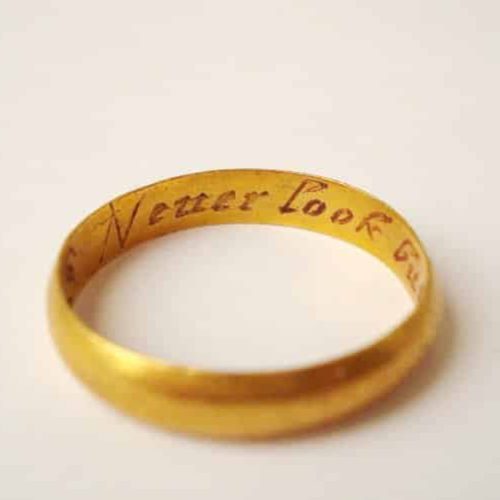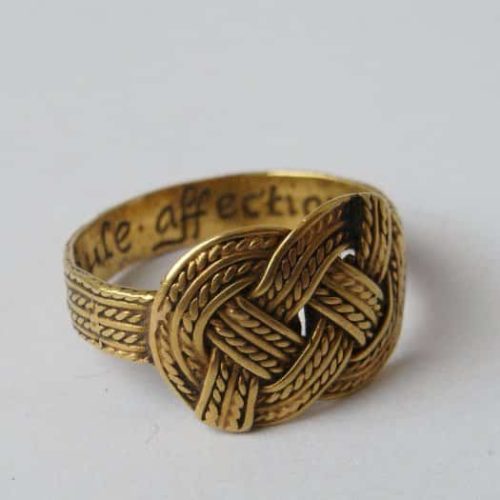A posy (or posie or poesy) ring, c. 17th and 18th centuries is a golden hoop ring of simple design – usually rounded on the outside – with engraved posy phrases on the inside such as “forget not who loveth thee” or “A loveing wife a happy life”. These were given as expressions of love, regards or other such sentiments.
According to Diana Scarisbrick in her book Rings:
These mottoes, known as posies, or little poems were usually in French, for centuries the universal language of love, at first in Lombardic script followed by black letter in the 15th century. Typical posies translate as ‘You have my heart’; ‘My heart belongs to you’; ‘Fortune wishes it’; ‘None so good’; and ‘Wear this for me’. The words, as in a garden of love, are somethimes interspersed with enamelled leaves, pansies, or roses warmed by rays of the sun. Whereas most posy rings conform to standard patterns and repeat the same inscriptions, occasionally a more individual design survives, such as a hoop ring designed as three books open at pages inscribed with the letters PO YR EC alternating with beaded panels between inscribed cest mon decir (It is my wish), from Kirby, Lancashire. Presumably these posies were intended for those aware of the literature of the time, and who could not only read the Lombardic and black letter script but also knew French. 1
Given as love tokens from the fifteenth century, they evolved into plain gold wedding bands during the 17th and 18th centuries, often stocked by jewelers with a customer’s choice of posy.
Sources
- Dalton, O.M. Catalogue of finger rings, British Museum. 1912
- Scarisbrick, Diana. Rings: Jewelry of Power, Love and Loyalty, London: Thames & Hudson, Ltd., 2007.


Notes
- Rings P.68.↵